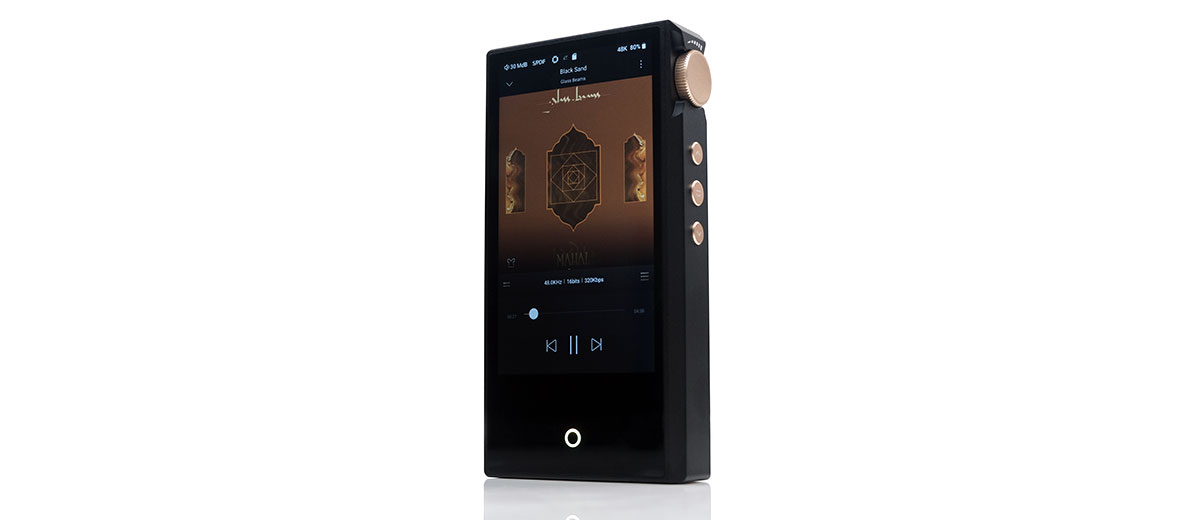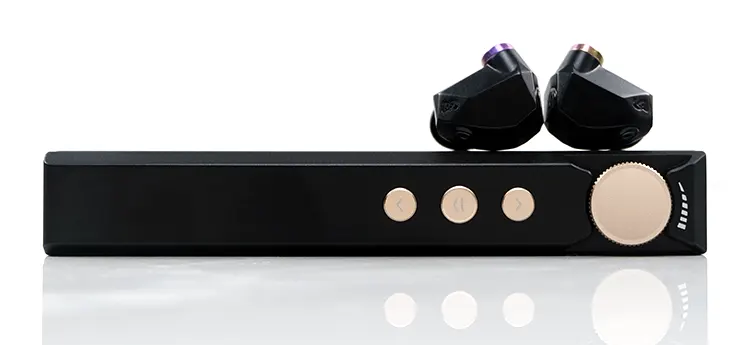Sound Impressions
The following sound impressions of the Cayin N3Ultra were created with a mix of the Campfire Audio Fathom, the Sennheiser IE 600, FIR Audio’s e12, and the Sennheiser HD 620S.
Summary
The pitch remains the same but the quality of the ingredients has been substantially improved.
The tuning of the three N3Ultra timbre modes sounds more ‘true’ to their descriptors than before, and the underlying DAC capability of the newer AK4439S runs rings around the older N3Pro version.
You get a more refined tonal quality from the N3Ultra and a step up in technical capability with a cleaner, more resolving performance, enhanced staging, and excellent dynamics.
In short, it makes the N3Pro sound flat and compressed. More so when compared to the N3Ultra’s Classic Tube Timbre and to a lesser extent the Modern Tube alternative which has a vastly improved perception of staging width and depth.
I had always classed the HiBy R5 Gen 2 as the best ‘mid-fi’ DAP for bass weight but the N3Ultra has put it in its place and then some. With both tube modes the bass shelf is longer and the amplitude higher creating a monstrous bass response from known low-end kings such as the FIR Audio e12.
So much so there were times when I had to switch to the Modern or solid-states’ slightly more controlled tuning such was the force of nature the Classic Timbre’s sub-bass became with bass-heavy dynamic driver IEMs.
Do not let that dissuade you. If you are a basshead or want to dig out a bit more bass authority from your IEMs or headphones then you have come to the right DAP at this price point.
Solid-State Timbre
Of course, there are tonal distinctions. The solid-state is cleaner sounding and comparatively vocal-centric with a drier overtone when compared to the sweeter and smoother tube alternatives.
This is where I feel the new DAC best shows its raw technical capabilities over the older N3Pro DAC in terms of improved clarity and a tighter more dynamic-sounding bass response.
The sound stage is more intimate when compared to the tube alternatives with a stronger midrange center focus. The vocals image is slightly further forward with a better treble extension over the N3Pro solid-state version.
I suspect people will use this mode less than the tube alternatives. However, it has some deserving matchups, particularly with warmer vocal forward sound signatures and articulate BA drivers from the likes of the Campfire Audio Fathom.
The bass response, though still refreshingly authoritative, is not quite as elevated as the tube modes, opting instead for a bit more speed and tightness in its delivery. It’s about as close to neutral as you can get with the N3Ultra.
Modern Timbre
This is my favorite N3Ultra tube timbre mode, especially with the Sennheiser HD 620S.
It is more closely aligned to the N3Pro’s Ultralinear alternative with a nice blend of some of the solid-state mode’s punch and speed combined with the expected warmer and smoother tonal quality of a good set of tubes.
However, this updated timbre is where the technical side of the performance starts to pick up with some impressive channel separation and a much wider soundstage from all of our tested IEMs.
I will attribute some of that improved technical capability to the more modern DAC and circuit path which delivers far better dynamics and a blacker more spacious background over the older version.
I am also hearing far more treble extension and better sub-bass depth with a subtle shift in emphasis to the mid and upper treble over the lower which injects a slightly more ethereal quality to the upper mids and highs.
Not quite as elaborated as the Classic Timbre upper-treble but enough to give it a sweeter sound and a bit more in terms of upper-order harmonic overtones when compared to the older N3Pro Ultralinear version.
The depth, heft, and body on the lows are also more substantial compared to the more neutral weight of the N3Ultra’s solid-state timbre. It also retains a bit of the solid-state mode’s bass energy, at least when compared to the more languid pace of the Classic Timbre mode.
Classic Timbre
The N3Ultra’s Classic Timbre is a huge step on the older Triode from the N3Pro and one I would consider using a lot more due to the revamped tuning and DAC performance.
Out of all of the three modes, this is likely the version most will point to and say, “That is a tube amplifier”.
It sounds big and atmospheric, with enhanced sub-bass presence, and airy sparkling highs. The staging presentation creates huge amounts of width and space, much more than the solid-state and even the Modern Tube mode can offer.
Where it might be slightly weaker for some users is the perceived weight and presence through the mids. There is more of a diffused and ethereal tone to both instrument and vocal compared to the other two modes resulting in a lighter note weight.
So, for example, bass-heavy and slightly brighter monitors such as the e12, or just V-shaped tuned IEMs in general might lose their shape and balance a bit due to the elaborated treatment from the Classic Mode FR emphasis with heavily colored lows and highs and a diminished vocal presence.
On the flip side, the Classic mode sounded wonderful with the Audeze MM-100 using the stronger power from the N3Ultra’s balanced output.
That additional bass body and relaxed set of mids create a much smoother and more muscular tone from the otherwise quite neutral MM-100 sound signature. A much more enjoyable setup than the solid-state/MM-100 pairing.
Synergy
Noise Floor
I think Cayin has done a remarkably good job in keeping the noise floor to a minimum from all of the N3Ultra headphone outputs.
With the Campfire Audio Fathom and the Andromeda 2020 using the 3.5mm SE and 4.4mm output on all gain stages the tube stages had very little background hiss on low volume.
It might not be quite as black as the solid-state mode but given this is a tube circuit it’s quite impressive and a step up on the older N3Pro noise floor performance.
You will need to bump up the gain stage to medium or even high for the likes of the more demanding driver inside the Sennheiser IE 600 but even on higher gain modes the noise floor is very composed.
Second to this is the volume control and channel balancing. Again, an exemplary performance with the same two sensitive IEMs.
The N3Ultra has near-perfect channel balancing from zero upwards on all gain stages with a marginally more aggressive volume rise the higher the gain stage but nothing too steep giving you plenty of control.
One aspect that appeals to me is low-level volume control. The N3Ultra version feels very natural and linear in its granular attenuation, particularly going from 1-2 steps to zero.
On the likes of the DX180 and the R5 Gen 2, it can feel abrupt like a mute relay kicking in whereas on the N3Ultra it felt like a natural drop to silence.
Both PO outputs are 0.5Ω SE and 1Ω balanced respectively so there should be no concerns about the potential for driver impedance skew from some IEMs.
IEM Pairings
The N3Ultra has some pleasing heft on its lows, particularly when switching to the tube timbre and pairing with dynamic driver IEMs.
I would go as far as to describe the N3Ultra tube timbre mode lows as one of the most potent at this price point. So much so, that at times I felt switching back to the flatter and drier solid-state mode was more suitable for controlling the dynamic driver.
For example, the FIR Audio e12 is known to be a bass monster. Paired with the N3Ultra it lives up to that moniker with some incredible sub-bass presence.
However, Classic mode’s elongated and juicer bass shelf combined with the relaxed mids feels a little unbalanced if you are not a complete basshead.
This is one IEM I might recommend you go for solid-state mode or perhaps the best compromise, the Modern Timbre mode which exhibits more speed on the lows, slightly less bloom, and better vocal presence.
At other times, the enhanced bass weight was welcome. The Sennheiser IE 600 has a nice punchy set of lows but sounds shallower and rawer on its forward vocal presentation.
Both the tube timbre moods soothed the tonal quality of the vocal timbre and brought in some additional weight on the lows to balance it out. Like the e12, my preference was for the Modern Tube timbre for the better vocal presence and slightly pacier bass response.
The Fathom was an interesting pair-up, perhaps the one pairing where I felt the dynamics and tighter transients from its BA setup worked quite well with the N3Ultra’s solid-state mode.
You lose a little of the expansive staging qualities from the Classic Tube pairing but the cleaner more neutral sound and more upfront vocal presence seem to suit the Fathom’s slightly warmish tuning.
Headphone Pairings
At 600mW into a 32Ω load for a balanced output, this is the most suitable connection pairing for most headphones I tested.
The drop to 250mW single-ended and the decrease in effective channel separation provides a slightly softer narrower performance less suited to the likes of the Audeze MM-100 or even the 150Ω Sennheiser HD 620S.
Both headphones have relatively compact soundstages that benefit from good separation and clarity. However, I felt the 2 headphones differed in how they reacted to the bass response and the level of vocal presence delivered from the N3Ultra’s various timbre modes.
For example, I enjoy the HD 620S the most when it delivers a solid and punchy mid-bass with more firmness and slight warmth through the mids.
With that in mind, I preferred either the Modern Tube Timbre mode or the solid-state mode depending on what recordings I was listening to. Both elevated the vocal further in the mids and increased the pace and control of the mid-bass punchiness.
The Modern Tube Mode option injected some enhanced smoothness into the timbre which helped more with brighter recordings as well as increased the perceived staging size.
On the flip side, I preferred the two tube modes over the solid-state mode for the MM-100. The MM-100 bass response is tuned flat which the solid-state mode doesn’t mess about with too much, keeping it urgent and clean in its delivery.
However, from a listening perspective, I appreciate the enhanced depth and body the tube modes offered. They created a smoother weightier tone from the MM-100 with the Modern Tube mode my preference again due to the beefier and more expressive vocal performances.





